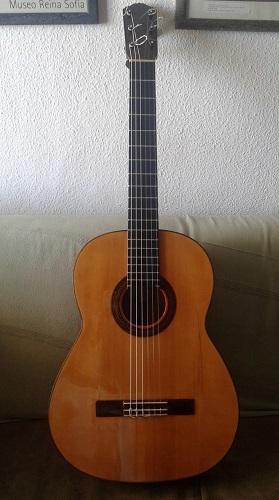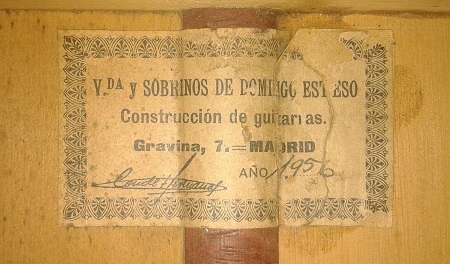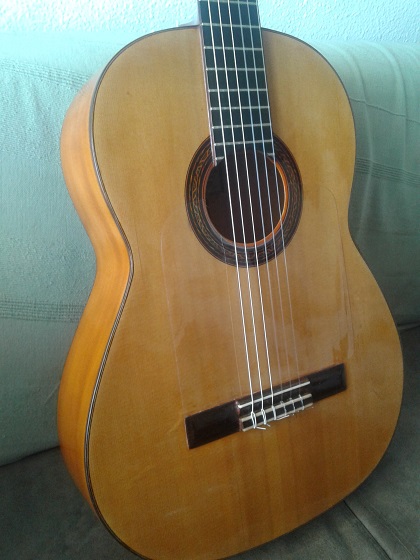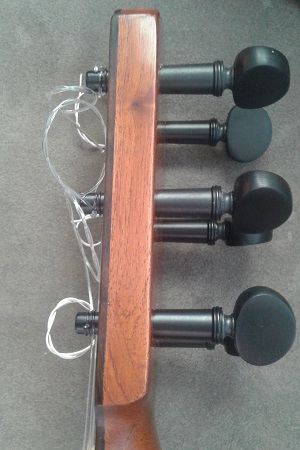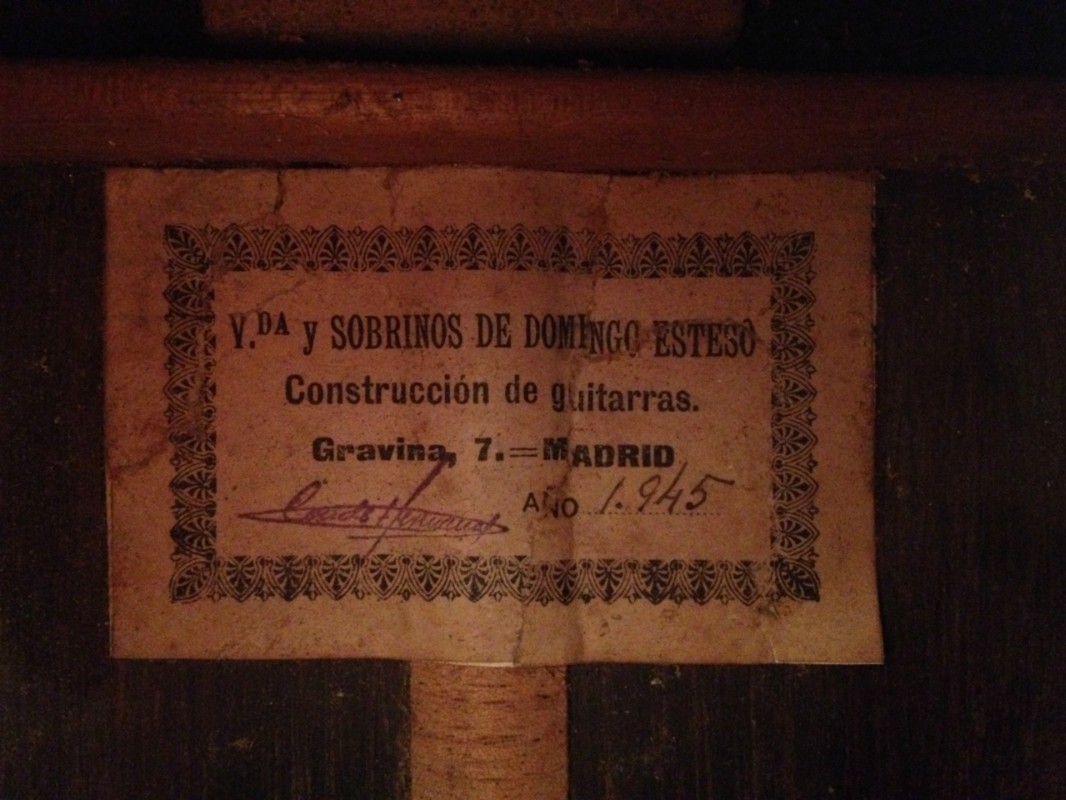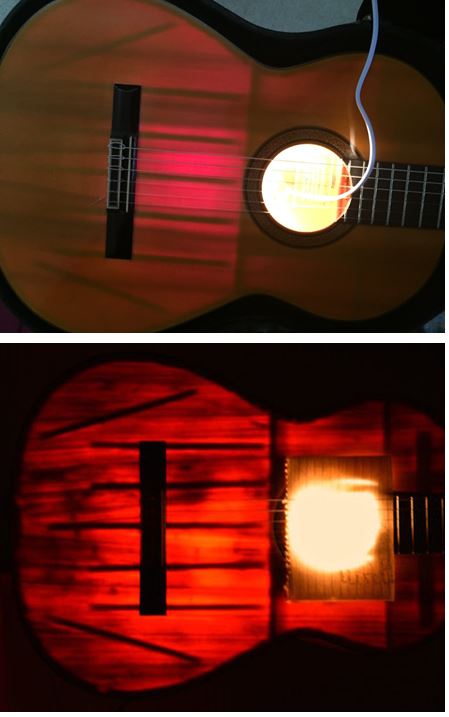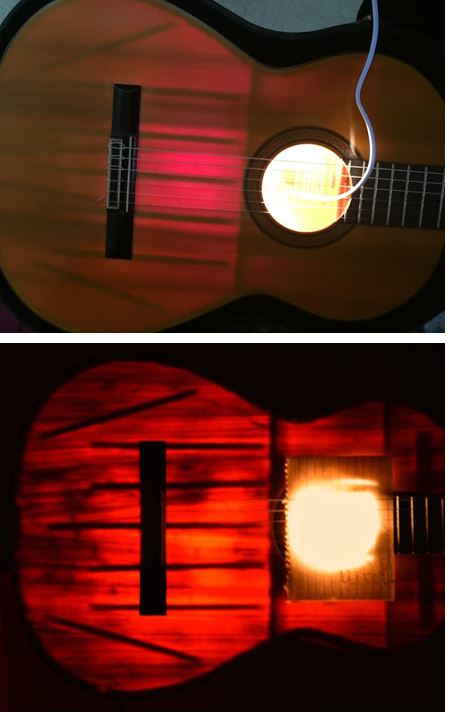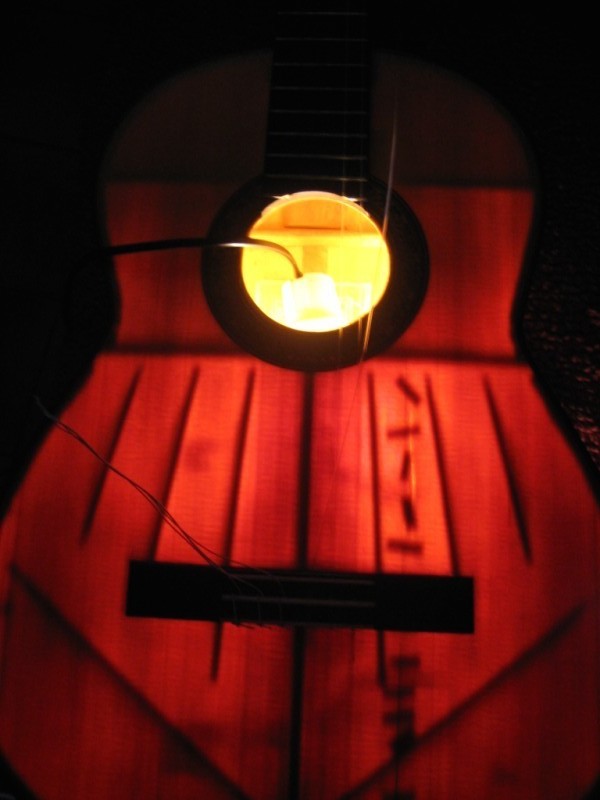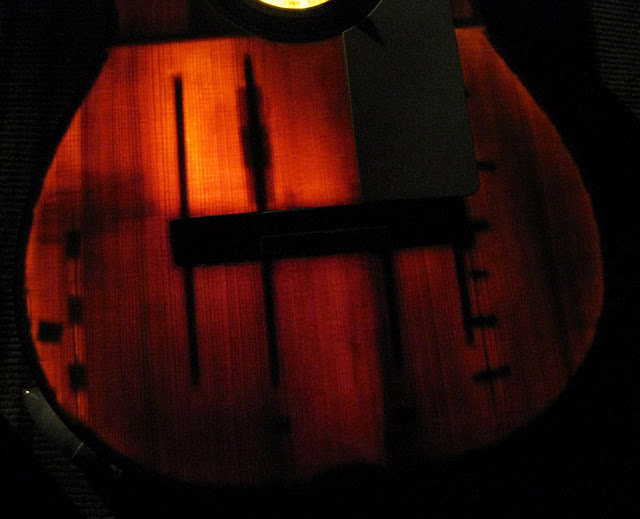|
Echi -> RE: New addition to the family (Aug. 29 2016 23:24:05)
|
My '64 Conde has 7 short bars (the 1st and the 7th stopping just after the bridge line) and is very good.
It sounds like a good old Conde and not as bold as the more recent Condes.
I have also a 74 Josè Bellido (5 bars plus 2 closing ones) a '98 Sanchis Carpio (5 bars) an'82 Gerundino (7 bars + 2 closing ones) and a 2002 Manzanero (5 bars + 2 closing ones).
At the moment the Manzanero is my favourite one. Manzanero imho is highly underrated, as he should be considered among the best makers of the last 60 years.
I tried an Arcangel just once in life many years ago. Usual Arcangel bracing: 5 struts, a big contrapuente and two long closing bars (same plantilla than a '34 Santos).
A year ago I tried a Manuel Caceres that was a faithful copy of an Arcangel's (Caceres made guitars under Arcangel's name for the last 11 years). I played it long and found it very good but at the end I took the Manzanero which had a lot in common with the Arcangel as feeling at your right hand and the transient of the note but a thicker sound, more Barbero or Conde like.
Anyway, inspite the bracing of some guitars are very similar they play very different.
The main difference between Arcangel and Barbero is the top thickness, for what I know.
Arcangel modified the old Barberos patterns (using a lighter top than the last Barbero). A thick, flat top can give a thick, bold note, even though with less dynamical range. Not very big differences anyway.
|
|
|
|
